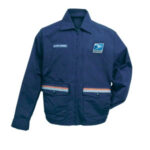The First World War, a conflict of unprecedented scale and devastation, not only reshaped the global political landscape but also brought about significant changes in military technology and strategy. Among these changes, the evolution of military uniforms played a crucial role, reflecting the shift from traditional warfare to the grim realities of trench warfare and modern combat. Understanding the uniforms of the First World War provides a fascinating glimpse into the practical needs and symbolic representations of the armies involved.
The Wool Service Dress: The Foundation of WWI Uniforms
For many nations entering the First World War, wool service dress formed the cornerstone of their military attire. These uniforms, typically made from serge wool, were chosen for their durability, warmth, and relative ease of production. The British Army, for example, famously adopted khaki serge, a practical and camouflage-effective color for the battlefields of Europe and beyond. Similarly, the French army initially utilized a dark blue coat and red trousers, which proved highly visible and were quickly adapted to more muted tones like horizon blue (bleu horizon) as the war progressed.
Field Jackets and Coats: Adapting to the Harsh Conditions
The static nature of trench warfare and the brutal weather conditions of the Western Front necessitated specialized outerwear. Field jackets and heavy overcoats became essential for soldiers enduring prolonged periods in the trenches. The British warm coat, a thick wool overcoat, provided crucial protection against the cold and damp. German soldiers similarly relied on greatcoats for warmth. As the war progressed, shorter, more practical field jackets began to emerge, offering greater mobility while still providing some protection from the elements. These garments often featured multiple pockets for carrying essential equipment and were designed for layering over the service dress.
Trousers and Breeches: Practicality and Regional Variations
Trousers in the First World War were primarily made from wool, mirroring the service dress. Straight-legged trousers were common, but breeches, tighter-fitting trousers that bloused into puttees or boots, were also prevalent, particularly in the early years of the war and among mounted troops. Puttees, strips of cloth wound around the lower legs, provided support and protection, especially when worn with ankle boots. Regional variations existed; for instance, in warmer climates, lighter materials like cotton might be used for trousers, or uniforms might be adapted in color and style to suit the specific environment of the conflict.
Headgear: From Peaked Caps to Steel Helmets
Headgear in the First World War underwent a dramatic transformation. Initially, many armies entered the war with peaked caps or cloth caps, offering minimal protection. However, the devastating impact of artillery and shrapnel in trench warfare quickly highlighted the need for more substantial head protection. The introduction of the steel helmet marked a pivotal moment in uniform evolution. The British Brodie helmet, the French Adrian helmet, and the German Stahlhelm became iconic symbols of the war, significantly reducing head injuries and becoming integral parts of the soldier’s uniform.
Uniform Colors and Camouflage: The Shift to Muted Tones
The early, brightly colored uniforms of some nations proved disastrously ineffective in the face of modern weaponry. The war witnessed a rapid shift towards more muted, camouflage-oriented colors. Khaki, grey, field grey (feldgrau), and horizon blue became the dominant colors, reflecting the need to blend into the landscape and reduce visibility to the enemy. While full-scale camouflage patterns were not yet widely adopted in uniforms during WWI, the move towards drab colors was a crucial step in the development of battlefield camouflage.
Conclusion: Uniforms as a Reflection of War’s Evolution
First World War Uniforms were more than just clothing; they were a reflection of the dramatic changes in warfare brought about by the conflict. From the initial wool service dress to the introduction of steel helmets and the shift towards camouflage colors, WWI uniforms tell a story of adaptation, necessity, and the evolving nature of military combat. They stand as poignant reminders of the soldiers who wore them and the harsh realities of the Great War.

